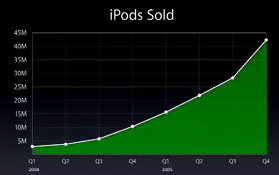 Drum roll please…
Drum roll please…
At the beginning of each month, we will profile the ten articles from the previous month that generated the most traffic to Human-Centered Change & Innovation. Did your favorite make the cut?
But enough delay, here are December’s ten most popular innovation posts:
- Forbidden Truth About Innovation — by Robyn Bolton
- A Letter to Innovation Santa — by John Bessant
- Preserving Ecosystems as an Innovation Superpower — by Pete Foley
- What is a Chief Innovation Officer? — by Art Inteligencia
- If You Can Be One Thing – Be Effective — by Mike Shipulski
- How to Drive Fear Out of Innovation — by Teresa Spangler
- 3 Steps to Find the Horse’s A** In Your Company (and Create Space for Innovation) — by Robyn Bolton
- Six Ways to Stop Gen-Z from Quiet Quitting — by Shep Hyken
- Overcoming the Top 3 Barriers to Customer-Centricity — by Alain Thys
- Designing Innovation – Accelerating Creativity via Innovation Strategy — by Douglas Ferguson
BONUS – Here are five more strong articles published in November that continue to resonate with people:
- What Are Strategic and Market Foresight? — by Braden Kelley
- Innovate for Good – Breaking Paradoxes — by Teresa Spangler
- Leading Your Way Through Crisis — by Greg Satell
- Innovating in a Downturn — by Geoffrey A. Moore
- Brewing a Better Customer Experience — by Braden Kelley
If you’re not familiar with Human-Centered Change & Innovation, we publish 4-7 new articles every week built around innovation and transformation insights from our roster of contributing authors and ad hoc submissions from community members. Get the articles right in your Facebook, Twitter or Linkedin feeds too!
Have something to contribute?
Human-Centered Change & Innovation is open to contributions from any and all innovation and transformation professionals out there (practitioners, professors, researchers, consultants, authors, etc.) who have valuable human-centered change and innovation insights to share with everyone for the greater good. If you’d like to contribute, please contact me.
P.S. Here are our Top 40 Innovation Bloggers lists from the last three years:
- Top 40 Innovation Bloggers of 2020
- Top 40 Innovation Bloggers of 2021
- Top 40 Innovation Bloggers of 2022
![]() Sign up here to get Human-Centered Change & Innovation Weekly delivered to your inbox every week.
Sign up here to get Human-Centered Change & Innovation Weekly delivered to your inbox every week.

 It is much easier to lose your nerve than it is to regain it, so better not to lose it in the first place. I have lost my nerve before and made decisions I regretted for a long time after they were made. Acting out of fear leads to poor decision making and a lack of leverage that, in turn, leads to unfavorable outcomes. That is why you must maintain your nerve and focus on the actions you need to take to create positive change, rather than allowing yourself to be overtaken by fear. Fear is one of those emotions that grows to fill the space.
It is much easier to lose your nerve than it is to regain it, so better not to lose it in the first place. I have lost my nerve before and made decisions I regretted for a long time after they were made. Acting out of fear leads to poor decision making and a lack of leverage that, in turn, leads to unfavorable outcomes. That is why you must maintain your nerve and focus on the actions you need to take to create positive change, rather than allowing yourself to be overtaken by fear. Fear is one of those emotions that grows to fill the space.
 While most individuals and organizations natural reaction to an economic downturn is fear and retrenchment, they also present a time of great opportunity.
While most individuals and organizations natural reaction to an economic downturn is fear and retrenchment, they also present a time of great opportunity.